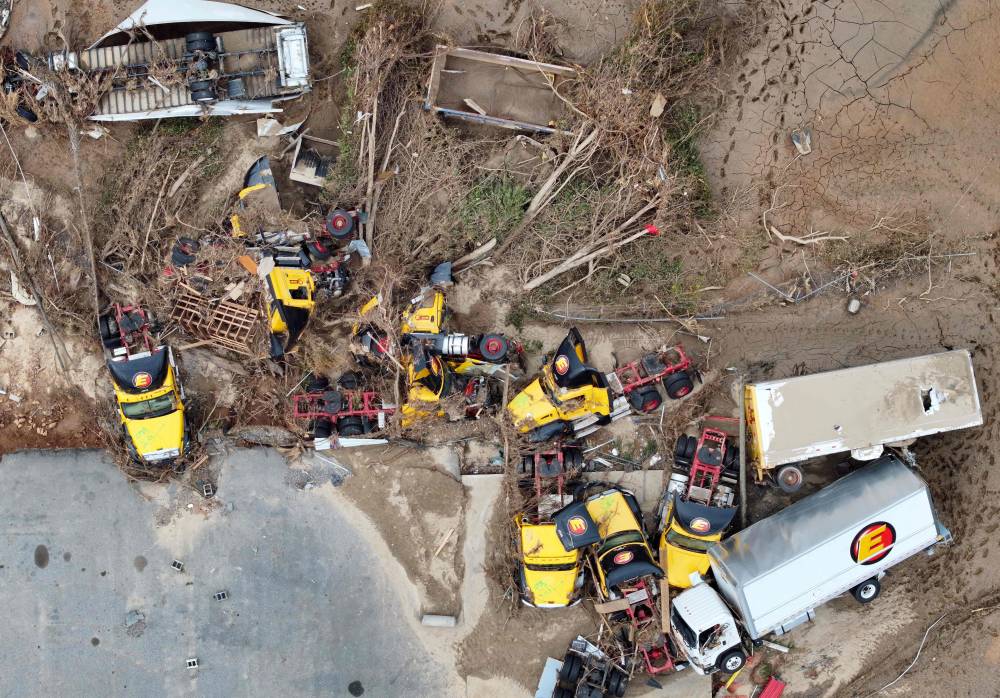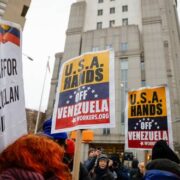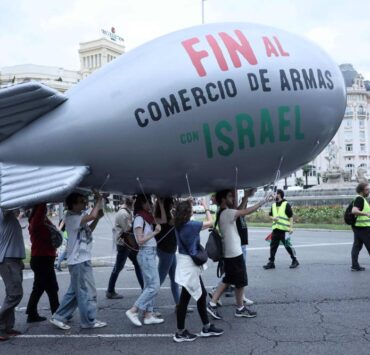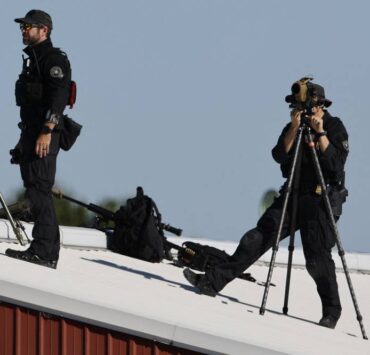A ‘forgotten’ valley in storm-hit North Carolina, desperate for help

PENSACOLA, NORTH CAROLINA—The only road to Pensacola, in the remote mountains of western North Carolina, is now a muddy path through deep, twisting gorges. Its main bridges were swept away last week in floods fueled by devastating Hurricane “Helene”—and a cold winter is coming.
“Every major bridge into town is completely gone,” Christy Edwards, a resident of the valley, told Agence France-Presse (AFP). She was speaking near the site of her former craft shop—carried away by the fast-moving floodwaters.
The isolation of this steep-sided valley speaks of the utter ruination inflicted by Helene on some of the more secluded corners of the southeastern United States.
Even a week after the powerful storm’s passage, access to the area is only slowly being restored.
But “winter is coming,” said Edwards, a former teacher, and at an altitude of 900 meters, time is running short.
Temperatures are expected to drop sharply next week, and “these people and these homes have no heat source other than power, [though] some of them do have wood-burning stoves.”
Not far away, past the jumbled mass of tangled tree limbs and rocks that Helene left strewn across her yard, the local fire station has become a beehive of activity, with free food, friendly faces, and a generator providing light and comfort to huddled residents.
Janet Musselwhite, in her 60s, has come with friend Randi to try to use the station’s satellite internet link to contact relatives.
‘Devastated’
“We’re devastated,” she said. “We don’t have electricity. Most people don’t have water. We have no cell service. We have very little communication.”
The storm claimed at least one life in the Pensacola area, that of a woman who, according to her neighbor, was swept away in one of the dozens of mudslides that carved paths of desolation on area slopes early the morning of Sept. 27.
Helene has claimed at least 220 lives overall, making it the second most deadly storm to strike the United States in more than a half-century, behind 2005’s Hurricane “Katrina.”
David Rogers, a military veteran, said he and other survivors were completely cut off from the outside world for three days.
Rescue teams finally arrived, and behind them, a steady stream of backhoes and bulldozers.
For many residents, the federal presence arrived too late, and the process of applying for emergency assistance through the Federal Emergency Management Agency is too complicated.
AFP is one of the world's three major news agencies, and the only European one. Its mission is to provide rapid, comprehensive, impartial and verified coverage of the news and issues that shape our daily lives.

















